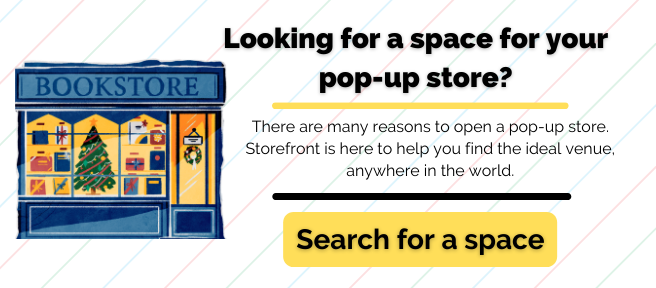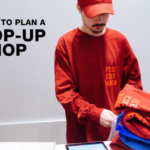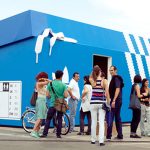According to Pew Research Center, more than 90% of retailers are on at least two social media channels. And as competition in the retail landscape grows, so does the noise on social media.
The attitudes towards using social media varies — some brands are on there because they think they have to be, whereas others are using smart strategies and tactics to reach the right audiences at the right time and place. It’s becoming increasingly important, too. About one-third of consumers prefer to connect with brands on social media versus the phone.
Whether you’ve already established a social media strategy or not, it can be an extremely effective approach to marketing your pop-up shop.
1. Choose the Right Channels
Choosing the right channels is essential to the effectiveness of your social media campaign. It comes down to understanding who your target audience, which channels they use and how they use them.
Here’s how it breaks down, according to Pew:
- Facebook: Most widely used network; 88% of users 18–29 years old use Facebook; not many 65+ years; about three-quarters of users log in daily; brands can post videos, pictures, text-only posts and comments, as well as create Facebook events
- Twitter: Younger than Facebook users (more than half the user base is under 49 years old); 42% of users log in daily; brands can post videos, pictures and text-only posts; the character count limit was recently increased from 140 to 280 characters
- Instagram: Nearly one-third of all Internet users are on Instagram; more than half of the users are younger, aged 18–29 years; brands can post videos and images to the highly visual platform
- Pinterest: Pinterest users skew heavily female; most users do not log in daily; brands can post photos and images to the highly visual platform
- Snapchat: The newest to join the list (and not included in Pew’s research), Snapchat users are mostly 13–34 years old, though their most active age group is 18–24; this platform is also highly visual, though the nature of sharing doesn’t require as high-quality of visuals as Instagram and Pinterest
2. Post the Right Content
Once you’ve determined where you’ll post, it’s time to figure out what to post on social media to promote your pop-up event. This is one of the biggest challenges for brands. To approach this obstacle, it’s helpful to think about planning your social media content in three main phases: pre-pop-up, during pop-up and post-pop-up.
https://www.instagram.com/p/bjmSo4yLFx/
- Pre-Pop-Up
Teasing the products is an approach that experiential agency TO THE MARKET explores. If they would’ve changed one thing about their recent pop-up shop at the National Geographic Museum, “we would have developed a stronger preview of what products were going to be sold at the pop-up shop and perhaps highlighted gift package options,” says Charlotte Florence Day, chief strategy officer. Consider creating something like a Pinterest board with categorized products that will be for sale at your pop-up event.
Behind-the-scenes content is always a hit, too. This builds excitement about the pop-up event, and also gives your audience a sneak preview — an “in” — to your upcoming event.
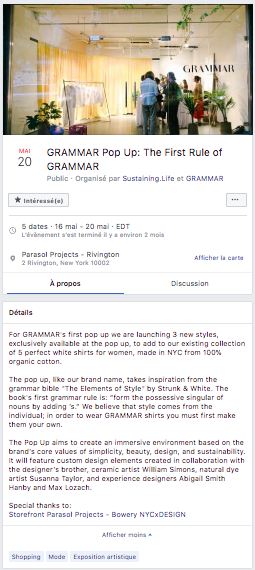
A Facebook event page is also essential as a pre-pop-up tactic. This allows you to remind potential attendees about the event, and it also means they’ll receive notifications directly from Facebook when the event is approaching. Staying top-of-mind can help you increase awareness of your pop-up event — and also increase attendance. Plus, having a Facebook event can help you anticipate how many customers will attend — and you can use attendance rates to make that estimate more accurate for future events.
Regardless of which content you share pre-pop-up, Stephanie Cartin, co-CEO of social media marketing agency Socialfly, recommends branding every post with a hashtag. “Create a hashtag and include it in all of your promotions,” she says. “This way, you can track who’s talking about your event and see how many people post about their experience.”
https://www.instagram.com/p/Bh8_LmEHLp-/?hl=en&taken-by=mmlafleur
- During the Pop-Up
When the pop-up event is finally happening, maintain an active presence on social media to drive even more interest and engage your customers. Remember to always provide all of the necessary event details — location, dates, hours, etc. — so the information is handy. Whatever you can do to make your pop-up event easily discoverable will make your audience more likely to come.
Real-time content of your pop-up shop in progress will show users what they’re missing. TO THE MARKET found success in this. “We shared videos and images the day of at the Museum Store with Instagram Stories,” says Day.
https://www.instagram.com/p/BdAvWXSD3Ie/
Remind your audience that if they don’t act soon, they risk missing out on the experience altogether, especially given the temporary nature of pop-ups. Beauty brand Revolve did exactly that with their Los Angeles pop-up shop during the 2017 holiday season. A little sense of urgency can go a long way.
- Post-Pop-Up
Just because the pop-up event is over doesn’t mean your work is done. Although you can’t drive customers to your pop-up event anymore, you can build more brand awareness and excitement for potential future pop-up events or campaigns.
Cartin also recommends leveraging user-generated content — content created by your customers and brand advocates — on your own social channels. “Guests will share their content for the next few days or weeks after the event, and you can repost it,” she says. “You can also find interesting content to repurpose.”
She recommends creating a campaign about the pop-up event, sharing memories you shared with your customers throughout the event. This can strengthen relationships with your customers, as well as broadcast how you value customers.
3. Expand Your Reach
- Paid Social Ads
An organic-only approach to social media is no longer effective for most brands. Changes to algorithms have made social media channels a “pay-to-play” gig — if you can’t invest in building a following and increasing your reach, you risk your posts ever being seen.
Even a budget as small as $50 to allocate to promoting your social media posts about your pop-up event can increase the effectiveness of your efforts. Whether it’s a boosted post or a paid ad, there are multiple ways you can pay to target the customers you want to come to your event.

- Engage Influencers
Influencer marketing is a form of word-of-mouth marketing that can help you expand your reach on social media. By partnering with influencers, you can leverage the access they have to their established following.
“To generate buzz before a pop-up event, partner with influencers that will promote the event on their social channels,” Cartin says. “When selecting the right influencer to promote your pop-up shop, be sure the influencers followers are the demographic you are looking to reach. Get creative with your invitation so influencers will want to share it with their followers.”
- Leverage Partnerships
If you’re partnering with other brands for your pop-up event, you can also use social media to cross-promote to their audiences.
TO THE MARKET recognized this opportunity and leveraged its relationship with high-profile National Geographic to reach massive social media audiences. “The National Geographic Museum promoted the pop-up shop via their own social media channels, including Facebook and Twitter,” Day says.
Recognizing the visibility of a partner like National Geographic, TO THE MARKET took a creative approach to the visual treatment of their social media content. “We imitated National Geographic’s iconic yellow and serif script in some of the promotions and Instagram Stories,” Day says.
“Using these graphics connected the Museum Store and TO THE MARKET through recognizable branding for National Geographic employees, Museum visitors, TO THE MARKET DC-based customers, and walk-in Museum store customers.”
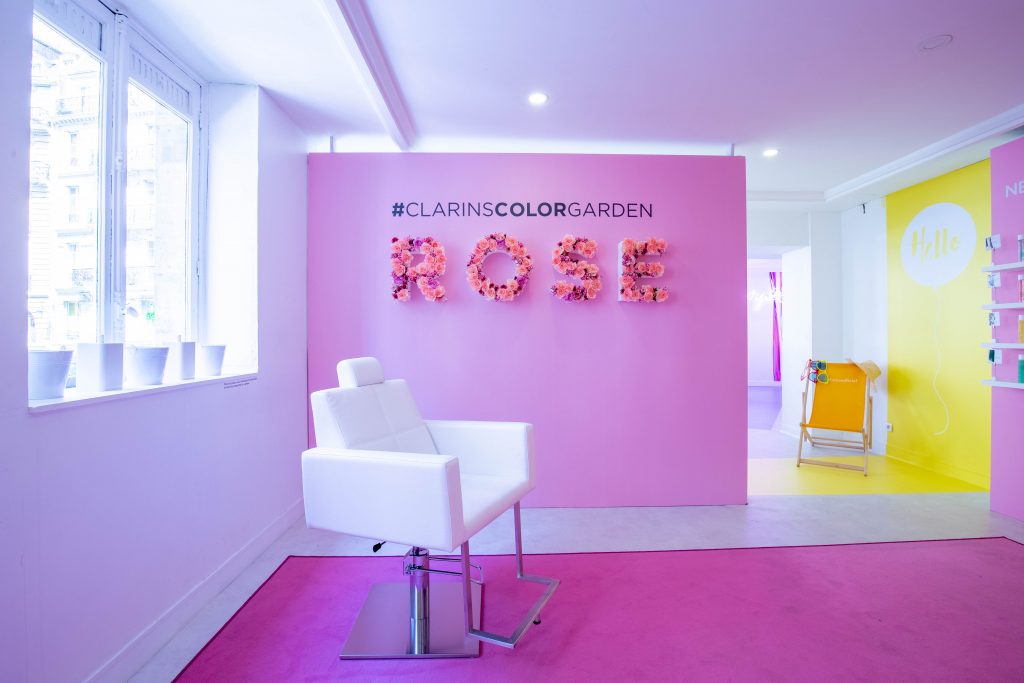
4. Encourage Social Sharing Among Your Customers
Social sharing from your customers will ideally occur before, during and after your pop-up shop. More than half consumers share positive experiences and request advice from their networks when they talk about brands on social media. It always helps to remind customers to share, and to give them a good reason to do so.
Cartin suggests making your pop-up event “Instagrammable.” “Hire people who will transform your event space into an interactive and experiential setting where guests want to take photos, videos and Stories,” she says. “Design a space that’s made for social media, and guests will want to document and share their experience at your event on social media.”
But simply creating the space and experience isn’t enough — your tactics are strengthened if you directly ask customers to share. “Offer incentives or giveaways for posting at the pop-up,” Cartin says, pointing to Revolve as an excellent example to follow. “[The beauty brand] does an amazing job of curating experiences and pop-ups at trending events. They partner with their team of influencers to spread the word and always design beautiful spaces that are Instagram-worthy from every angle.”
Brands can also look to create an emotional connection with their customers. Bloom Bras has done this exceptionally well. The brand has hosted two pop-ups (one in Detroit and one in San Francisco) — and they sold out of several products in under two hours. Because they’ve solved a very specific and personal pain point (ill-fitting bras), their customer base has reached out and promoted the brand on social media organically.
Regardless of how you use social media, there’s no denying that it can be a viable tool for brands looking to promote their pop-up shops.
- How to Promote A Pop-Up Event on Social Media - July 17, 2018
- Photo Flip: 10 Unique San Francisco Pop-Up Spaces that Will Make Your Event Stand Out - July 6, 2018
- A Guide to Employee Training for Your Next Pop-Up Event - June 5, 2018

